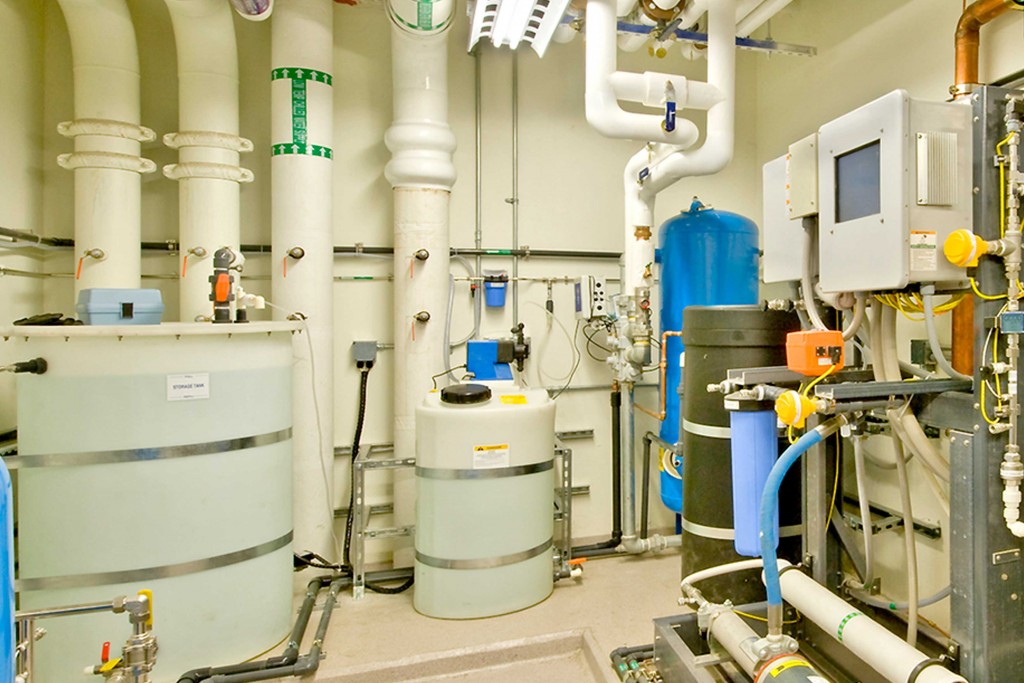 The 315,000 industrial manufacturing companies in the United States, consume water and a variety of liquids in their manufacturing processes or products, and generate hazardous liquid waste that must be treated prior to being released to the municipal sewer or environment. Liquids can be grouped into the three application categories including inputs, process and outputs. Inputs are the liquid inventory and supply chain for the factory. They may include potable or ultrapure water, chemicals or oils, additives or ingredients, lubricants or cleaners. Whatever bulk liquids are required by the company to manufacture its goods and services, these are the inputs. The majority of inputs are used in the the company’s process, either in support of manufacturing a product, or as an ingredient blended into the product. With the exception of water, inputs are normally delivered by a supplier, inventoried in bulk storage tanks and distributed throughout the factory in day tanks, located at their point of use within the process. Smaller liquid quantities are inventoried in portable tanks such as 55 gallon drums or intermediate bulk containers referred to as totes. Fork liftable, these tanks are easy to inventory, move and exchange at their point of use. If machinery is involved, then oil and grease will be important inputs for lubrication. Wet process equipment is either built on site or procured from an original equipment manufacturer as a skid or machine that serves a particular function within the process. No matter the process, two outputs result, including products and wastewater. Most products are not liquid based, but liquids were used in their manufacture to cut, mill, etch, clean, paint, assemble, lubricate, test, package and deliver, when you consider fuel and oil in their transportation. If they are liquid based, then they’re appropriately packaged for bulk or consumer applications. As products go out the door, wastewater is reclaimed for treatment. Industrial manufacturers generate and treat millions of gallons of wastewater per day. Common waste examples include solids, oils, salt-ions, biodegradable or synthetic organics, un-neutralized acids or alkalis, and toxic metals or elements. Process waste collects in sumps and is periodically transferred into treatment. Given the diversity of processes, wastewater treatment systems are designed to address the specific composition of each waste stream. Level measurement and control solutions are required throughout industrial manufacturing input, process and output applications for inventory monitoring, automation and safety.
The 315,000 industrial manufacturing companies in the United States, consume water and a variety of liquids in their manufacturing processes or products, and generate hazardous liquid waste that must be treated prior to being released to the municipal sewer or environment. Liquids can be grouped into the three application categories including inputs, process and outputs. Inputs are the liquid inventory and supply chain for the factory. They may include potable or ultrapure water, chemicals or oils, additives or ingredients, lubricants or cleaners. Whatever bulk liquids are required by the company to manufacture its goods and services, these are the inputs. The majority of inputs are used in the the company’s process, either in support of manufacturing a product, or as an ingredient blended into the product. With the exception of water, inputs are normally delivered by a supplier, inventoried in bulk storage tanks and distributed throughout the factory in day tanks, located at their point of use within the process. Smaller liquid quantities are inventoried in portable tanks such as 55 gallon drums or intermediate bulk containers referred to as totes. Fork liftable, these tanks are easy to inventory, move and exchange at their point of use. If machinery is involved, then oil and grease will be important inputs for lubrication. Wet process equipment is either built on site or procured from an original equipment manufacturer as a skid or machine that serves a particular function within the process. No matter the process, two outputs result, including products and wastewater. Most products are not liquid based, but liquids were used in their manufacture to cut, mill, etch, clean, paint, assemble, lubricate, test, package and deliver, when you consider fuel and oil in their transportation. If they are liquid based, then they’re appropriately packaged for bulk or consumer applications. As products go out the door, wastewater is reclaimed for treatment. Industrial manufacturers generate and treat millions of gallons of wastewater per day. Common waste examples include solids, oils, salt-ions, biodegradable or synthetic organics, un-neutralized acids or alkalis, and toxic metals or elements. Process waste collects in sumps and is periodically transferred into treatment. Given the diversity of processes, wastewater treatment systems are designed to address the specific composition of each waste stream. Level measurement and control solutions are required throughout industrial manufacturing input, process and output applications for inventory monitoring, automation and safety.





